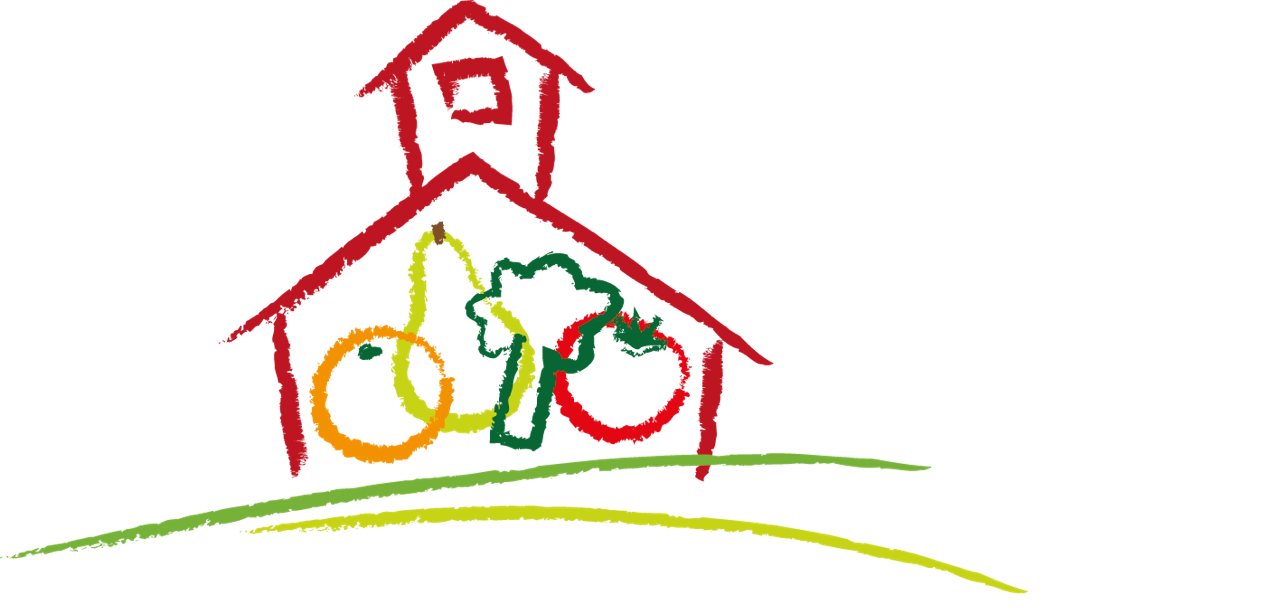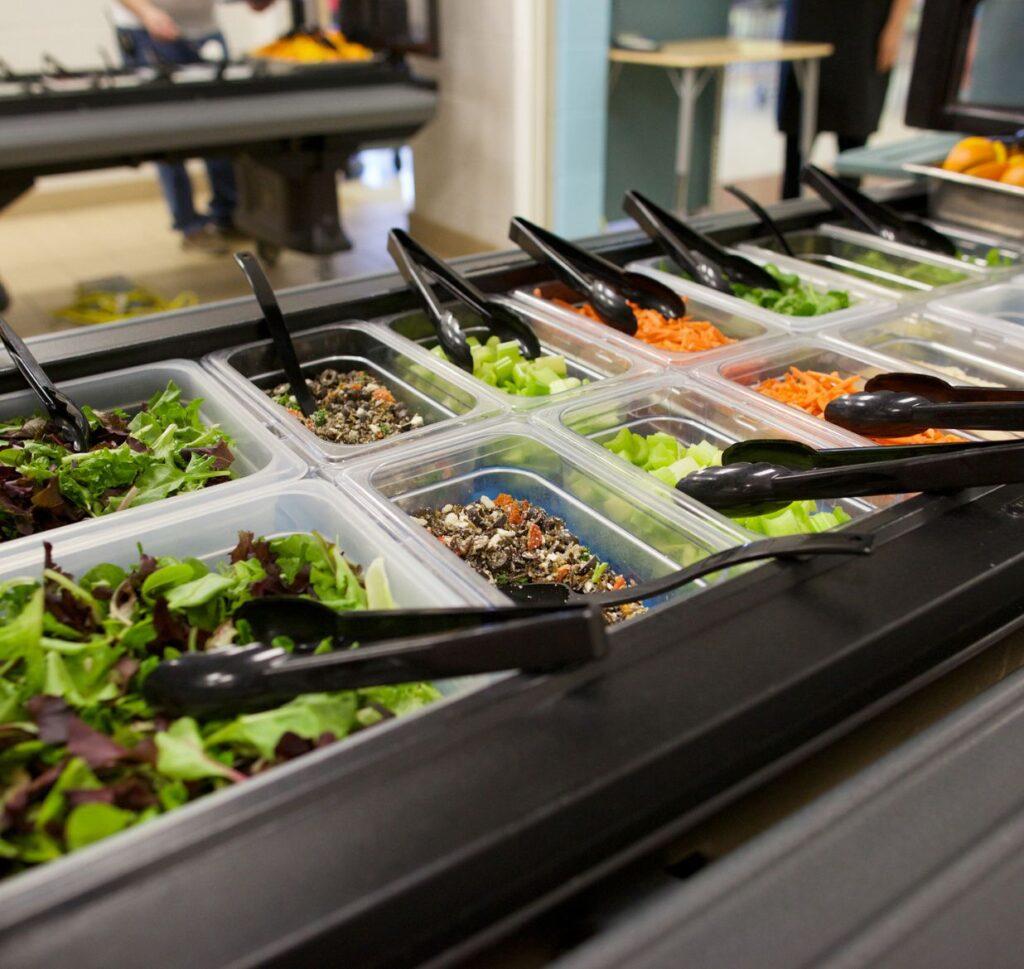Mixing It Up: 10 Ways to Spice Up Your School Salad Bar
Salad bars in schools are about more than simply offering kids fresh fruits and vegetables daily; innovative salad bars take students on culinary adventures and prove that healthy eating can be an exciting journey of flavors and textures. While keeping it simple is a good start, salad bars offer a great opportunity for school food professionals to be creative and offer a wide variety of recipes in addition to raw fruits and vegetables. Thinking outside the box with your salad bar is an excellent way to inspire students to love fresh, healthy food.
Here are some ideas to spice up your school’s salad bar:
- Variety: Use a wide variety of fruits and vegetables. When selecting vegetable components, try to incorporate choices from different categories: dark green, red and orange, legumes, starchy, and others.
- Composed recipes: In addition to offering a wide variety of fresh fruits and vegetables, create whole salad recipes. There are many options, from classics like Potato Salad and Tabouli to more creative ones like Wild Rice and Butternut Squash. Find more composed salad recipes on The Lunch Box.
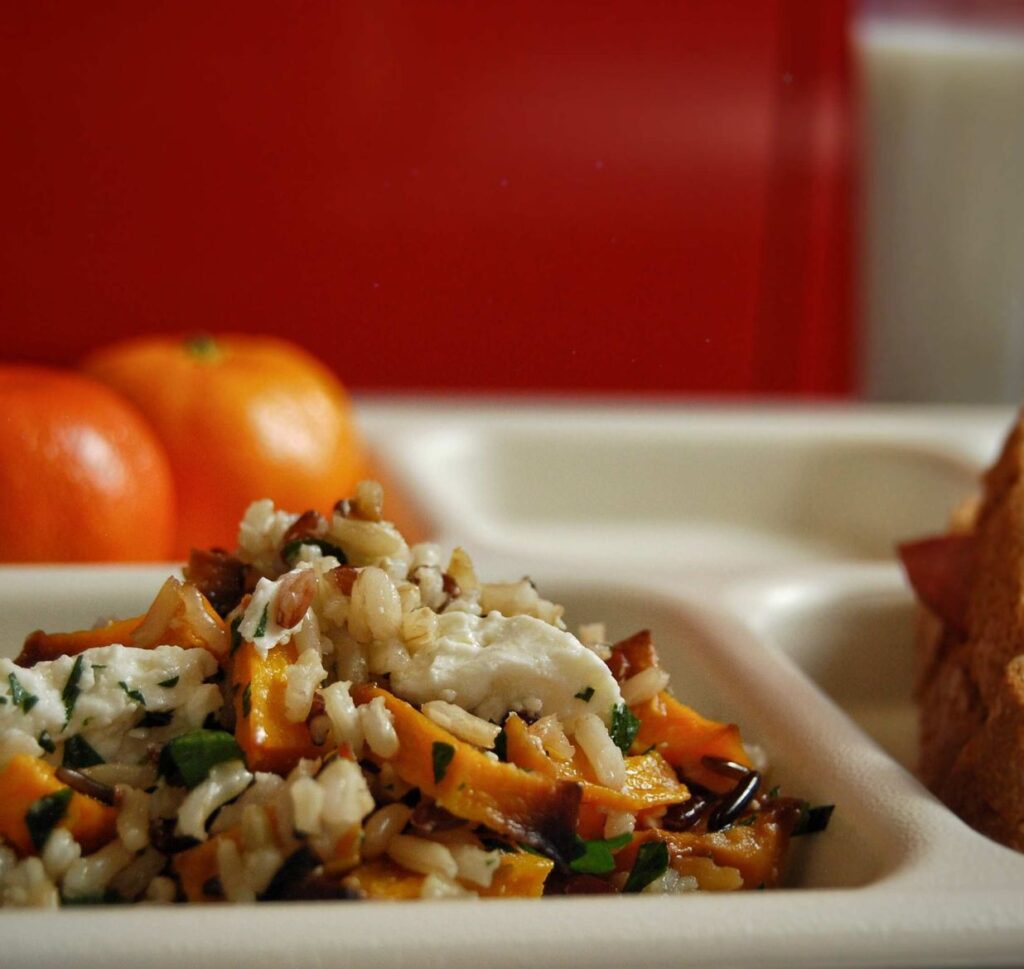
- Rainbow Days: Who says salads can’t be fun? The excitement around salad bars grows tremendously with this one-day activity, which encourages kids to choose three food colors (not including white foods) from the salad bar and receive a prize (like a sticker) once eaten.

- Local Harvest: Celebrate your region’s produce with seasonal specialties. Featuring a harvest of the month can be a great way to introduce new items to students—bonus points for going hyper-local by using produce grown in the school garden or hydroponic system. Local flavors boost both nutrition and local economies.
- Dress It Up: Skip the bottled stuff and try our easy, healthier dressings. Our Balsamic Herb and Cilantro Vinaigrette are student favorites that make any salad shine.
- Protein Power-Ups: Fuel growing bodies with protein-packed options. Feature different proteins on the line; options include diced turkey, chopped hard-boiled eggs, hummus or sweet potato hummus, and more!
- DIY Salad Guide: Empower students to become salad chefs with an easy build-your-own guide. Choose a base (greens or grains), add protein, pick 3-5 veggies, sprinkle on some extras (nuts, seeds, or dried fruit), and finish with a dressing. Voila!
- Student Spotlight: Take DIY a step further and encourage students to create their own full recipes. You can even host junior chef cooking competitions to determine which student-created recipes should be added to the menu.
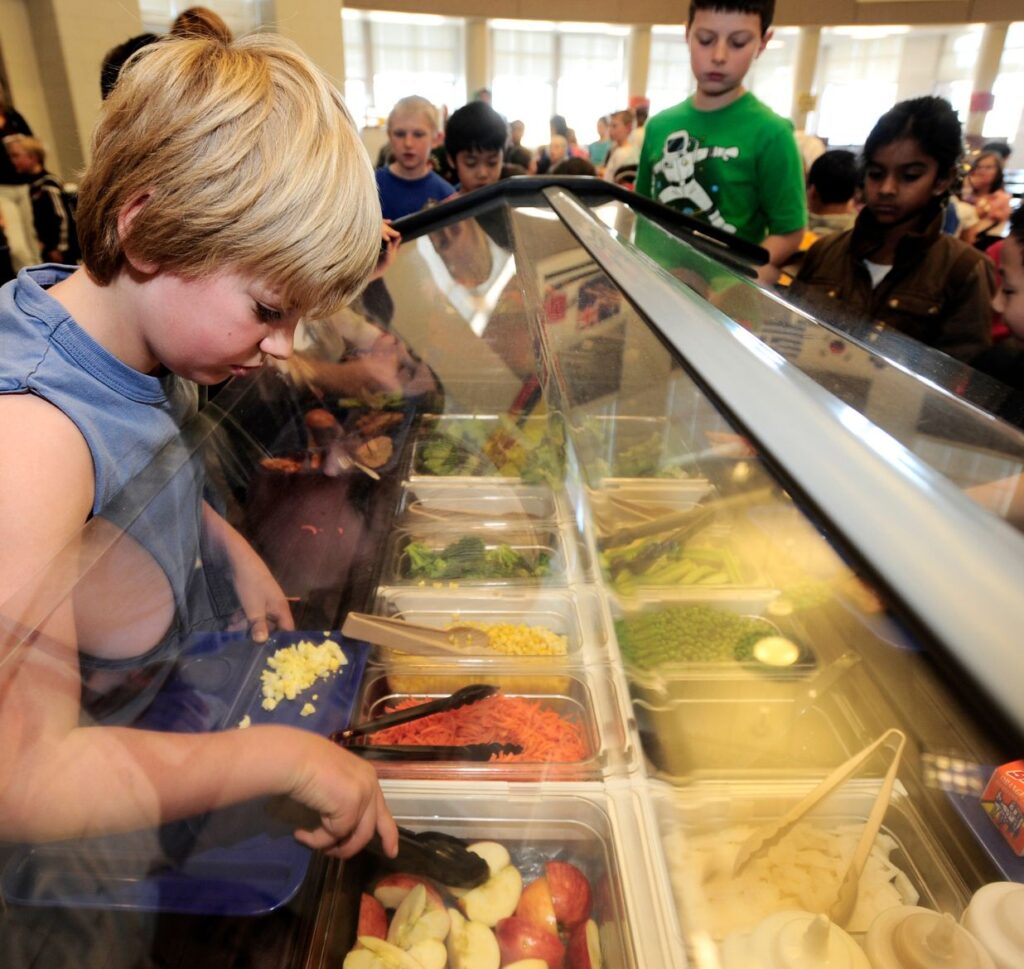
- Around the World in 80 Bites: Take students on a culinary journey with theme-based salads. Try a Tuscan salad with sun-dried tomatoes and white beans , an Asian-inspired slaw with mandarin oranges and sesame, or a fiesta bowl with black beans and corn. Rotate these global flavors to keep things interesting!
- Stay Inspired: There’s a lot to know and keep up with salad bar operations. Consider taking the popular Salad Bars in Schools course from the School Food Institute and browsing The Lunch Box resources on topics like procurement, operations, and marketing.
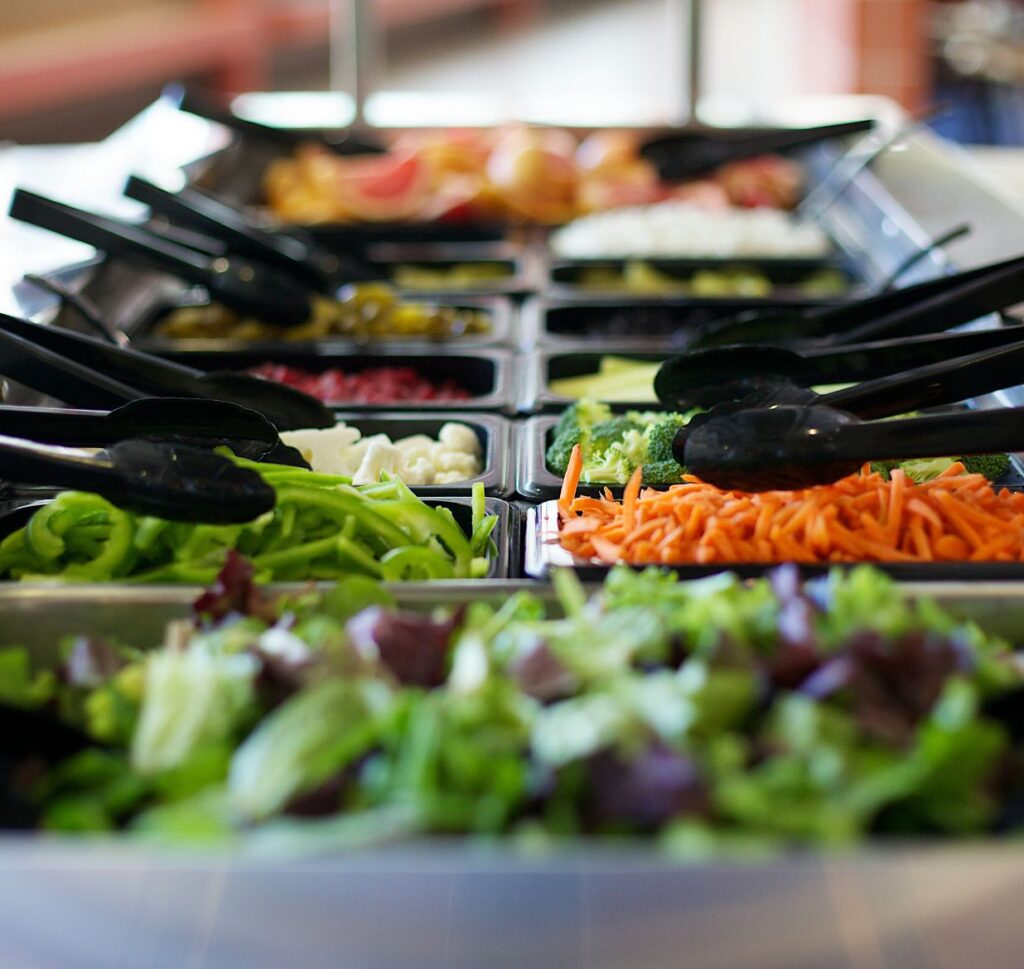
The keys to a great school salad bar are variety, color, and student involvement. We can help kids develop a lifelong love for healthy eating by offering diverse, appealing options.
Want to bring these exciting salad creations to your school? Learn more about our Salad Bars to Schools program and how you can get a salad bar in your school.
